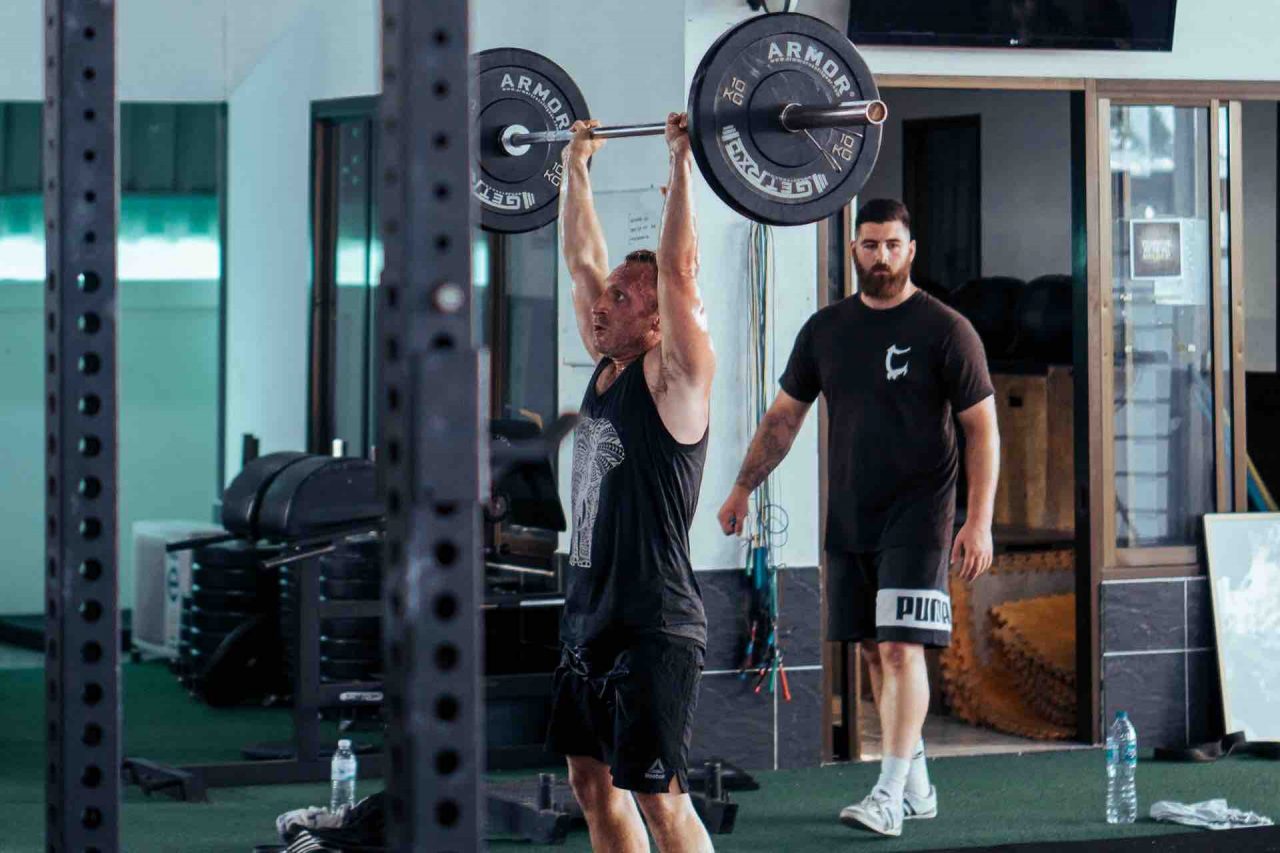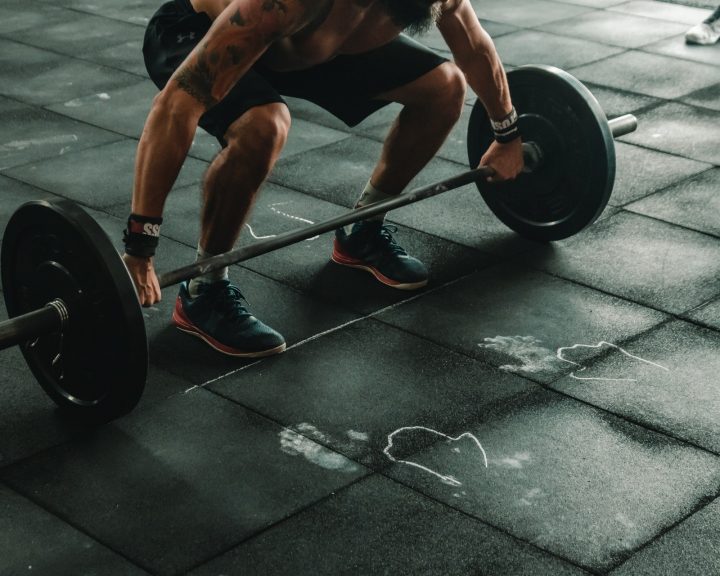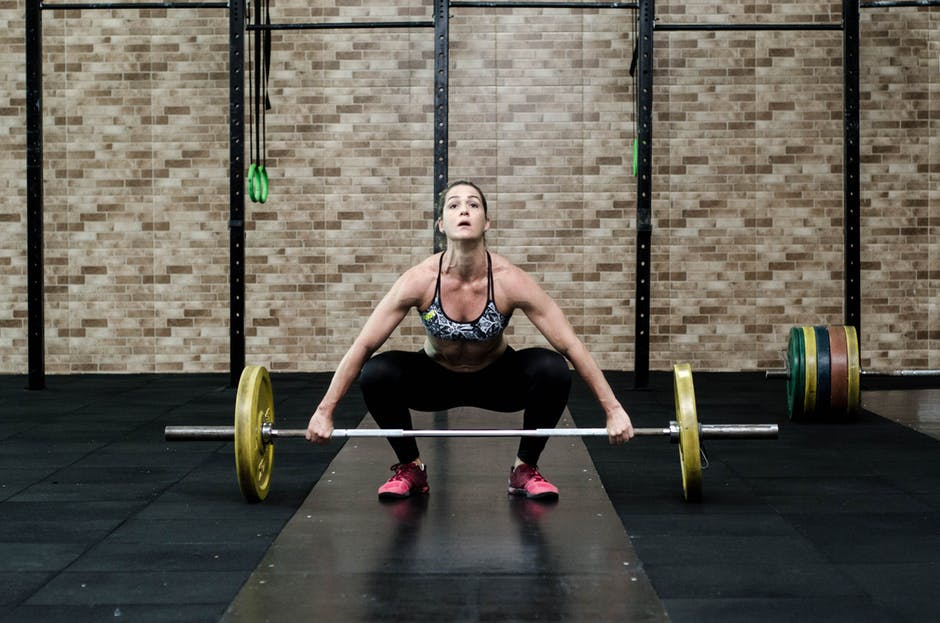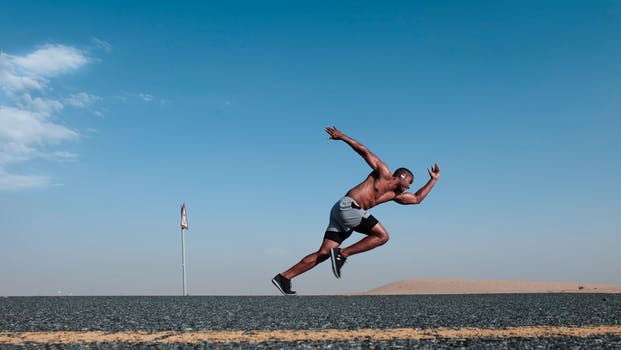The push jerk is another great exercise for developing power in a team strength and conditioning setting. This exercise is performed standing up, uses most of the muscles of the body, and has to be done in about a second to be a successful lift. As we’ll discuss, it also does not require a ton of technical instruction or special equipment.
To perform this exercise either have the athlete clean the bar to their shoulders or take it off the rack so that it is on the front of the athlete’s shoulders. In a clean or front squat, we would want the athlete’s elbows up high so that the upper arm is at least parallel to the ground. With this exercise we can allow the elbows to drop down slightly if this is uncomfortable so that there is a 45 degree angle between the upper arm and the body at the shoulder.
This lift can be divided into three parts; the dip, the drive and the press.
The Dip:
Start with the bar on the front of the shoulders. The feet should be hip-width apart. The chest should be out with the shoulders pulled back. From here, quickly move into a quarter squat.
The Drive:
Without pausing in the bottom of the quarter squat, reverse directions explosively. If this is done right then the leg drive will push the bar off the shoulders to about eye height.
The Press:
When the bar reaches the height of the eyes, the athlete will finish the movement by pressing the bar up and slightly behind their head. Done properly the bar should end up in line with the athlete’s hips (this is important for balance). Another cue here is for the athlete to have their arms hear their ears when the bar is overhead.
Lower and repeat.
Things to avoid:
- We don’t want the athlete to drop their elbows all the way down. This can put unnecessary stress on the wrists and makes control of the bar difficult.
- There should not be a noticeable pause between the dip and the drive. Doing this dissipates the elastic energy we are trying to tap into.
- Athletes should never be leaning backwards to control the bar.
- Every repetition needs to be distinct and all out. Remember, this is a power exercise not something we do for a pump.
Now, some thoughts about equipment. There are two different approaches to using this exercise. One is to use it as an almost strength exercise to help build up an Olympic lifters jerk. When used this way athletes go extremely heavy, make mistakes, and require bumper plates and a platform to drop them on. The second approach is to use this as a power exercise for most other athletes. Done this way we should be using 60-70% weights. This means we may not need the bumper plates and platforms.
In any event, either approach makes this a great exercise in a team setting. Like other rack/platform exercises one athlete can lift, two others can load, and other athletes can be performing different exercises while waiting.




